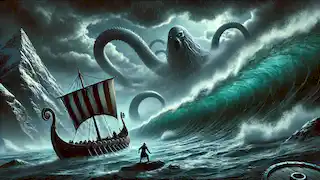{{{_Intro}}}
The cold, unforgiving waters of the North Atlantic, stretching between Norway, Greenland, and Iceland, have long been a source of fear and fascination. For centuries, these seas have been the stage for countless tales of terror, mystery, and adventure, with none more enduring or terrifying than the legend of the Kraken. This monstrous sea creature, said to dwell in the depths of the ocean, has haunted the imaginations of sailors and coastal dwellers alike, inspiring awe and dread in equal measure.
This story will delve into the origins of the Kraken, tracing its transformation from a guardian of the seas to a feared and malevolent force. We will explore the terror it unleashed upon the world, the expeditions that sought to find it, and the legacy it left behind in literature, art, and culture. Through these pages, we will uncover the truth behind the legend and the enduring power of the Kraken in the human psyche. In the beginning, when the world was young and the gods were still shaping the land and sea, there was harmony between the elements. The gods of the Norse pantheon, Odin, Thor, and their kin, worked to bring order to the chaos that reigned in the primordial world. They sculpted mountains, carved out rivers, and filled the oceans with life. Among their creations was a mighty creature, a being of immense power and intelligence, born from the very essence of the sea itself. This creature was the Kraken, a guardian of the ocean's depths, tasked with maintaining the balance between land and sea. The Kraken was unlike any other being created by the gods. It was said to be as large as an island, with tentacles that could stretch for miles and a maw that could swallow entire ships whole. Its eyes were like twin suns, glowing with the light of the deep ocean, and its skin was as tough as the hardest rock, impervious to the weapons of men. For centuries, the Kraken fulfilled its role as a guardian, protecting the seas and ensuring that the natural order was preserved. It was a creature of the deep, rarely seen by mortal eyes, and its presence was felt more than it was witnessed. The Kraken was a symbol of the ocean's power, a reminder that the seas were not to be trifled with. But as time passed, the world changed. The gods withdrew from the mortal realm, leaving humanity to its own devices. Men began to explore the seas, building ships and setting out to discover new lands. With them came greed and a desire for conquest, and the delicate balance that the Kraken had maintained for so long began to crumble. The Kraken, once a loyal servant of the gods, grew disillusioned with humanity. It watched as men overfished the seas, polluted the waters, and disrespected the natural world. The creature's heart, once filled with a sense of duty and purpose, darkened with anger and resentment. It began to see itself not as a protector, but as an avenger, a force of nature that would punish those who dared to defy the ocean's will. The first recorded attack by the Kraken occurred in the early Middle Ages, off the coast of Norway. A group of fishermen, braving the frigid waters in search of a bountiful catch, found themselves in the grip of a terrifying force. Without warning, the sea began to churn, and the surface of the water was broken by massive, writhing tentacles. The fishermen's boat was lifted from the water as if it were a child's toy, and before they could react, they were pulled into the depths, never to be seen again. Word of the attack spread quickly, and soon the legend of the Kraken began to take shape. Sailors spoke of a creature that could rise from the ocean without warning, dragging entire ships beneath the waves. The Kraken was said to be as large as a mountain, with tentacles that could crush a ship's hull and a mouth that could devour a vessel whole. Its appearance was often accompanied by storms and whirlpools, as if the very sea itself was conspiring with the creature to destroy those who dared to venture into its domain. As more and more ships disappeared without a trace, fear of the Kraken grew. Coastal communities began to see the creature as a manifestation of the ocean's anger, a punishment sent by the gods to humble the pride of men. Sacrifices were made to appease the Kraken, with offerings of livestock, and in some cases, even human lives, thrown into the sea in the hopes of placating the beast. Despite these efforts, the Kraken's attacks continued. Sailors began to avoid certain areas of the ocean, particularly the waters between Norway, Greenland, and Iceland, which became known as the Kraken's hunting grounds. These waters were considered cursed, and only the bravest or most desperate would dare to venture into them. One of the most harrowing tales of the Kraken's wrath comes from the annals of Viking history. A fleet of longships, led by the legendary warrior Hrothgar the Bold, set out on an expedition to explore the western seas. As they sailed into the waters off the coast of Greenland, they encountered a sudden and violent storm. The seas rose up around them, and the sky darkened as if night had fallen. Out of the chaos, the Kraken emerged. Its tentacles, as thick as the masts of the ships, wrapped around the vessels, crushing them with ease. The crew fought valiantly, hacking at the creature's limbs with their swords and axes, but their efforts were in vain. One by one, the ships were dragged beneath the waves, their crews lost to the depths. Only one ship, Hrothgar's own, managed to escape. The warrior, known for his bravery, was left humbled by the encounter, and he returned to Norway with a tale of terror that would be told for generations. His account of the Kraken's attack spread throughout the Norse lands, and the creature became a symbol of the ocean's untamed power, a reminder that even the bravest of men could be brought low by the forces of nature. As the centuries passed, the legend of the Kraken continued to grow. By the time of the Age of Exploration, when European powers began to expand their empires across the globe, the Kraken had become a well-established part of maritime folklore. Sailors from England, Spain, Portugal, and the Netherlands all carried with them tales of the creature, and its fearsome reputation spread far beyond the cold waters of the North Atlantic. During this time, the Kraken was often depicted as a monstrous octopus or squid, with artists and writers drawing on the descriptions provided by sailors and explorers. These depictions varied, with some showing the Kraken as a single massive creature, while others suggested that it was a species of giant sea monsters that roamed the world's oceans. Regardless of the specifics, the Kraken was always portrayed as a fearsome and deadly force, capable of sinking even the largest ships. The desire to find and study the Kraken grew among naturalists and explorers. The creature was seen as a challenge to be overcome, a mystery to be solved. Expeditions were launched with the specific goal of capturing or killing the Kraken, and many brave men set out in search of the beast, hoping to make their fortune or secure their place in history. One of the most famous of these expeditions was led by the English explorer Sir William Parsons in the late 16th century. Parsons, a seasoned sailor with a reputation for daring, believed that the Kraken was a real creature, possibly a giant squid or octopus that had not yet been discovered by science. He organized a fleet of ships and set out from England, determined to find and capture the beast. For months, Parsons and his crew scoured the waters off the coast of Norway and Iceland, following reports of Kraken sightings and investigating areas where ships had disappeared. They encountered numerous dangers, from treacherous storms to hostile natives, but they were undeterred. The lure of the Kraken, and the fame and fortune it promised, drove them onward. Eventually, Parsons' persistence paid off. Off the coast of Iceland, his fleet encountered what appeared to be a massive sea creature, its tentacles rising from the water like the limbs of a giant. The creature attacked the ships, and a fierce battle ensued. The crew fought bravely, using harpoons and cannons to try and subdue the beast, but the Kraken proved to be more than they could handle. In the end, Parsons' fleet was destroyed, and only a handful of survivors managed to make it back to England. Their tales of the encounter, though embellished by the trauma of their ordeal, added to the legend of the Kraken. Parsons himself was never seen again, and his name became synonymous with the dangers of exploring the unknown. Despite the failure of Parsons' expedition, the quest to find the Kraken continued. Naturalists of the 17th and 18th centuries, including the Danish bishop and historian Erik Pontoppidan, took a more scientific approach to the creature. Pontoppidan, in his book "The Natural History of Norway," described the Kraken in great detail, suggesting that it was a species of giant squid or octopus that lived in the deep waters off the coast of Norway. Pontoppidan's work, while speculative, lent a degree of credibility to the legend of the Kraken. He proposed that the creature could create whirlpools by swimming in circles, dragging ships to their doom. His descriptions were based on the accounts of sailors and fishermen, and while he admitted that some of these stories were likely exaggerated, he believed that there was a kernel of truth to them. The idea that the Kraken was a real, albeit rare, creature captured the imagination of the public. It was featured in numerous books, pamphlets, and scientific papers, and became a topic of debate among naturalists and scholars. Some dismissed the Kraken as a myth, while others argued that it was a yet-undiscovered species, possibly related to the giant squids that had been reported in various parts of the world. As the legend of the Kraken spread, it began to take on a life of its own in the realms of art and literature. The creature's fearsome reputation made it a popular subject for artists, who depicted it in a variety of forms, from woodcuts and engravings to paintings and illustrations. These images often showed the Kraken as a monstrous octopus or squid, its tentacles wrapping around ships and dragging them into the depths. One of the earliest and most famous depictions of the Kraken can be found in the 13th-century Icelandic manuscript "Konungs skuggsjá" ("The King's Mirror"). This manuscript, written as a dialogue between a father and son, describes the Kraken as a giant fish or whale that could devour entire ships. The accompanying illustrations show a massive sea creature, its mouth wide open as it swallows a ship whole. In the centuries that followed, the Kraken continued to appear in various artistic works, each contributing to the creature's evolving legend. By the 19th century, the Kraken had become a popular subject in Romantic literature, where it was often used as a symbol of the unknown and the terrifying power of nature. Alfred Lord Tennyson's 1830 poem "The Kraken" is one of the most famous literary works inspired by the legend. In this poem, Tennyson describes the Kraken as a sleeping giant lying at the bottom of the ocean, waiting to rise once again. The poem portrays the Kraken as a mysterious and ancient force, one that has existed since the dawn of time and will continue to exist long after humanity has passed away. "The Kraken" by Tennyson reads: _"Below the thunders of the upper deep,_ _Far, far beneath in the abysmal sea,_ _His ancient, dreamless, uninvaded sleep_ _The Kraken sleepeth: faintest sunlights flee_ _About his shadowy sides; above him swell_ _Huge sponges of millennial growth and height;_ _And far away into the sickly light,_ _From many a wondrous grot and secret cell_ _Unnumber'd and enormous polypi_ _Winnow with giant arms the slumbering green._ _There hath he lain for ages and will lie_ _Battening upon huge seaworms in his sleep,_ _Until the latter fire shall heat the deep;_ _Then once by man and angels to be seen,_ _In roaring he shall rise and on the surface die."_ Tennyson's poem captured the imagination of readers and helped solidify the Kraken's place in popular culture. The image of a giant sea creature lying dormant in the deep ocean, waiting to rise again, resonated with the Romantic era's fascination with the sublime and the unknown. The Kraken also appeared in the works of other writers, such as Jules Verne, whose 1870 novel "Twenty Thousand Leagues Under the Sea" featured a giant squid that was clearly inspired by the Kraken legend. In Verne's novel, the squid attacks the submarine Nautilus, leading to a dramatic battle between the crew and the creature. Verne's depiction of the squid as a fearsome and intelligent adversary helped to cement the Kraken's place in the canon of sea monsters. In addition to literature, the Kraken has been a popular subject in visual art. Painters such as Pierre Denys de Montfort, who created a series of illustrations of giant squids in the early 19th century, helped to shape the public's perception of the Kraken as a monstrous octopus-like creature. These images, along with the stories and poems that inspired them, have contributed to the enduring legacy of the Kraken as a symbol of the ocean's power and mystery. As the 19th century gave way to the 20th and 21st centuries, the Kraken's legend continued to evolve, adapting to new cultural contexts and technologies. In the age of cinema, the Kraken became a popular figure in monster movies and fantasy films, often portrayed as a massive, tentacled beast that terrorizes sailors and coastal communities. One of the most famous cinematic depictions of the Kraken is in the 1981 film "Clash of the Titans," where the creature is portrayed as a giant sea monster that must be appeased by the sacrifice of a princess. The film's climactic battle between the hero Perseus and the Kraken became an iconic moment in fantasy cinema and introduced the creature to a new generation of viewers. The Kraken has also appeared in more recent films, such as the "Pirates of the Caribbean" series, where it serves as a fearsome weapon controlled by the pirate lord Davy Jones. In these films, the Kraken is depicted as a nearly unstoppable force, capable of sinking ships with ease and striking fear into the hearts of even the most hardened sailors. In addition to its appearances in film, the Kraken has become a popular figure in video games, where it often serves as a powerful boss or enemy character. Games such as "God of War," "Assassin's Creed," and "Sea of Thieves" have all featured the Kraken as a formidable opponent, drawing on the creature's legendary status to create memorable and challenging encounters for players. The Kraken's influence can also be seen in popular music, with bands such as "The Decemberists" and "Tenacious D" referencing the creature in their songs. The Kraken has even been adopted as a mascot by various sports teams and organizations, further cementing its place in modern culture. Despite its many depictions, the Kraken remains a symbol of the unknown, a representation of the dangers and mysteries that still lie beneath the surface of the ocean. In an age where science has unraveled many of the world's mysteries, the Kraken serves as a reminder that there are still things in the world that we do not fully understand. While the Kraken is often portrayed as a mythical creature, modern science has offered some possible explanations for the legend. The most widely accepted theory is that the Kraken legend was inspired by sightings of giant squid, real creatures that can grow to lengths of up to 43 feet and have been known to attack ships. Giant squids, like the Kraken, are deep-sea dwellers that are rarely seen by humans. They have large, powerful tentacles and a beak-like mouth that can deliver a strong bite. While they are not as large or as powerful as the Kraken is often depicted, their unusual appearance and behavior could easily have inspired tales of sea monsters among sailors. In addition to giant squids, other marine phenomena could have contributed to the Kraken legend. Underwater earthquakes and volcanic eruptions can create sudden and violent disturbances in the ocean, producing massive waves and whirlpools that could easily be mistaken for the actions of a giant sea creature. These natural events, combined with the already dangerous and unpredictable nature of the sea, may have given rise to the stories of the Kraken. Despite these scientific explanations, the true origin of the Kraken legend remains a mystery. Like many myths and legends, it is likely a combination of fact and fiction, a story that has been shaped and reshaped over centuries to reflect the fears and fascinations of different cultures and eras. Today, the Kraken is more than just a sea monster from ancient legend; it is a cultural icon, a symbol of the unknown and the power of nature. It has been featured in countless films, books, and games, where it continues to captivate and terrify audiences. The Kraken has also been adopted by various brands and organizations, further cementing its place in popular culture. Despite its fearsome reputation, the Kraken has also come to symbolize resilience and strength. It is a reminder that even in a world where much has been discovered and understood, there are still mysteries to be explored and dangers to be faced. The legend of the Kraken may have begun as a tale told by sailors around a fire, but it has grown into something much larger. It is a story that has transcended time and place, becoming a part of the collective imagination of people around the world. And as long as there are oceans to explore and mysteries to uncover, the Kraken will continue to live on, a legend that refuses to be forgotten.The Birth of the Kraken
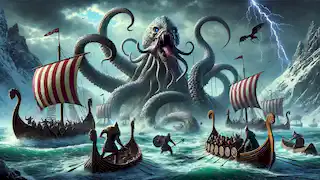
The Kraken Unleashed
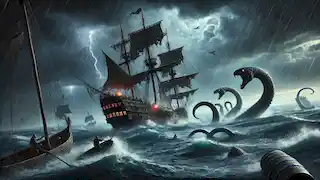
The Kraken and the Age of Exploration
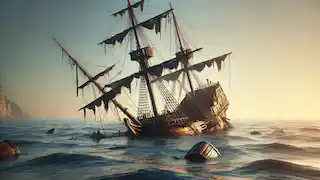
The Kraken in Art, Literature, and Culture
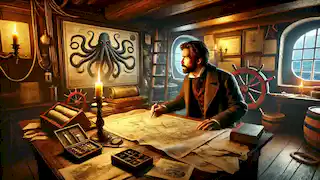
The Kraken in Modern Culture
The Science Behind the Legend
The Kraken's Enduring Legacy

